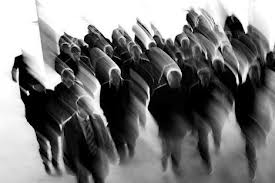Government is inefficient, but I repeat myself.
Sandy created massive problems, and New York found themselves utterly unprepared:
Sandy flooded both tubes of the Brooklyn-Battery Tunnel, now called the Hugh L. Carey Tunnel, which was one of the major and longest transportation disruptions of the storm. It also ravaged the Rockaways in Queens, particularly the waterfront community of Breezy Point, where roughly 100 homes burned to the ground in a massive wind-swept fire.
Among the other crises Cuomo and New York City Mayor Michael Bloomberg faced on a daily basis during Sandy were the shortage of temporary housing, which continues, the long disruption of electricity and gasoline, generators in health care facilities swamped by floodwaters, restoring power from swamped electrical infrastructure and repairing commuter rail lines.
But it didn’t have to be this way:
More than three decades before Superstorm Sandy, a state law and a series of legislative reports began warning New York politicians to prepare for a storm of historic proportions, spelling out scenarios eerily similar to what actually happened: a towering storm surge; overwhelming flooding; swamped subway lines; widespread power outages. The Rockaway peninsula was deemed among the “most at risk.”
But most of the warnings and a requirement in a 1978 law to create a regularly updated plan for the restoration of “vital services” after a storm went mostly unheeded, either because of tight budgets or the lack of political will to prepare for a hypothetical storm that may never hit.
I’ll withhold my typical scorn of “the government should take care of us.” After all, this is a state law meant to address problems that the state would face. However, I will point out the main problem with government solutions:
They don’t work very well.
Had individual citizens taken efforts to protect themselves rather than holding out some fantastical hope of government assistance, the whole region would be better off.


No response is perfect, you’ll always be able to find a few things that went wrong. Overall, though, the government response was far better than any alternative. Sure you could say it would be better if everyone just was prepared, but that ain’t gonna happen — never has and never will, not even if there were no government.
There are many, many things government can do better than the private sector. Indeed, without government the private sector would decay into mafias and organized crime. I don’t understand how people can say governments never work well. Look at all the failures in markets and private sector? I know, you sometimes try to cast everything bad that happens as ultimately the fault of the government (even the market created derivative crisis), but that’s weak and seems like an attempt to try to protect an ideological predilection.
My view: markets work great in many circumstances, especially when effectively but not overly regulated. Markets should be supported by government and should be the backbone of the economy. But markets are built around money and stuff, not people. Governments are accountable to people and at their best make sure those without as much money are not denied basic rights and have basic needs met. Governments are better on the environment (look what happened before the Clean Air and Clean Water acts!) and other areas where the free rider problem comes into play – national defense, police and legal protection, and other things as well.
So let’s give markets credit where due, but let’s not downplay the efficacy and importance of good governance! It’s not an either/or, it’s finding the right mix. There is no ideological answer, but one that has to come from real world observations.